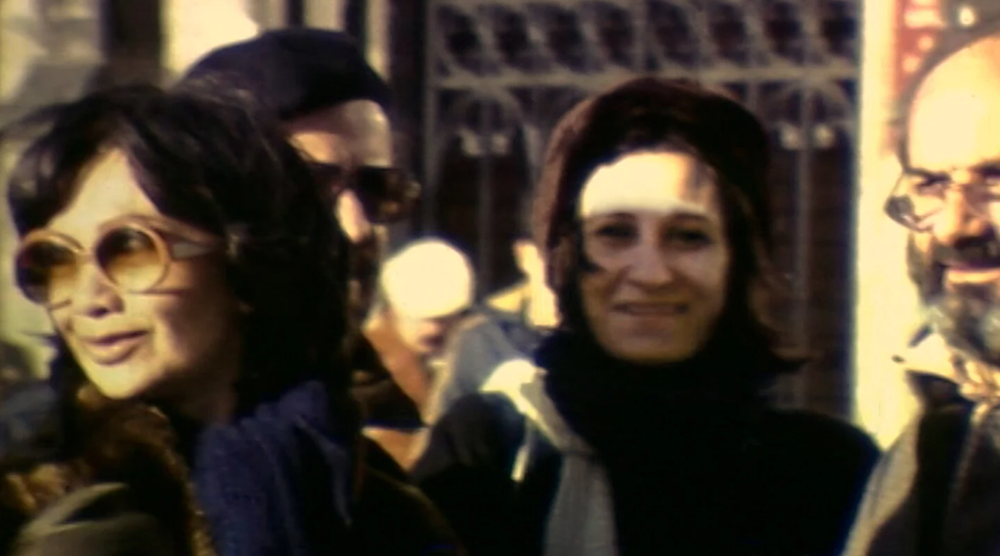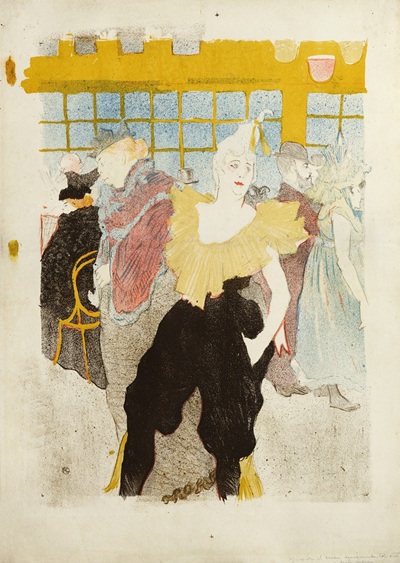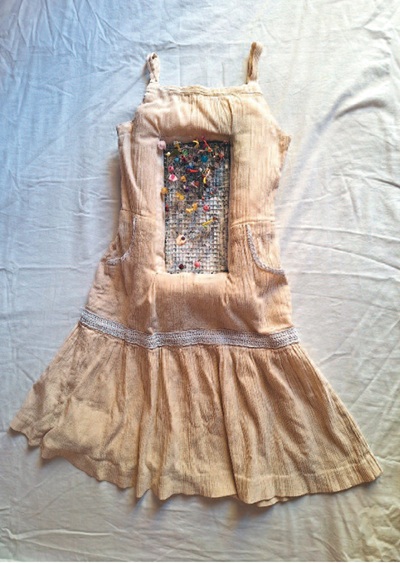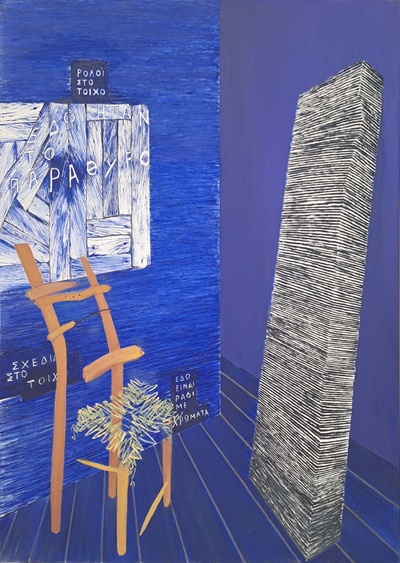
EΜΣΤ presents the complete filmic works of artist Diohandi (1945), for the first time, in light of the imminent gift of her filmic archive to the Museum.
From 1977 to 1986 Diohandi used a Super 8 camera to document some of the most seminal group shows featuring Greek artists both in Greece and abroad, filtering her subject matter through her unique artistic sensibility. The resulting footage is not easy to classify. It occupies a liminal space between an art film, an artwork and an archival document. From exhibition and installation views to shots of artists socialising and of the cities where this took place – Venice, Modena, Amsterdam, Antwerp, Nicosia and Athens – Diohandi’s films present a kaleidoscopic, ‘unofficial’ record of the contemporary artworld of the time, of exhibition history and the history of curating in Greece, as well as of her own artistic practice.
The 14 video works presented at EΜΣΤ are the result of a long and painstaking process of preservation, restoration and digitization, during which the artist went through hundreds of Super 8 reels of her own work on film, supplementing it with archival material: exhibition space floor plans, exhibition ephemera, artwork photos. Six years after her solo exhibition titled Diohandi archiving… (presented in 2019 at ISET, the Contemporary Greek Art Institute) and featuring archival material on her artist friends that she collected and classified starting in the mid-1980s, EΜΣΤ’s programme of screenings focuses on the artist’s film projects, which together with her practice as an archivist, unfold in parallel to her other work as a visual artist,
At a time when Greece lacked the institutional context to support and promote contemporary visual art, Diohandi’s meticulous documentation of the Greek contemporary art scene in the 1970s and 1980s, can be seen as an alternative form of ‘self-historicisation’, in the words of Zdenka Badovinac, to describe an informal and unofficial system of historicisation that is a response to the absence of an ‘official’ collective history.
The significance of her approach becomes clearer if one considers the fact that the exhibitions documented in these films take place during a time when independent curatorial practice starts to appear in Greece, to coincide with a series of important gestures in the direction of a more open, outwardly oriented art scene: notably, through the work of curators such as art historian Beatrice Spiliadis (1939-1986), historian, art critic and curator Efi Strousa (1941-2019), and AICA Greece, the Union of Greek Art Critics. Diohandi’s rigorous, sui generis gaze disrupts official art historical narratives to evoke instead the sense of a creative community which includes artists such as Dimitris Alithinos, Achilleas Aperghis, Yannis Bouteas, Bia Davou, Niki Kanagini, Rena Papaspyrou, Leda Papaconstantinou, Theodoros, Nikos Zouboulis and Titsa Grekou etc. At the same time, her films lay bare the deep rooted characteristics of her art practice, exposing a seminal artist’s obsessive preoccupation with an investigation of space and time as a conceptual and narrative continuum.
On Sunday, April 6, at 17:00, a discussion will take place featuring the artist, along with Eugenia Alexaki, Assistant Professor of Art History at the National and Kapodistrian University of Athens, Makis Faros, artist, and Tina Pandi, Curator at EMST.







Leave A Comment